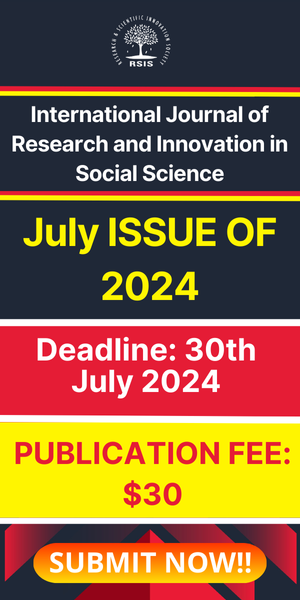Path Planning Algorithm for Mobile Robots in Static Environment
- January 2, 2020
- Posted by: RSIS
- Categories: IJRSI, Mechanical Engineering
International Journal of Research and Scientific Innovation (IJRSI) | Volume VI, Issue XII, December 2019 | ISSN 2321–2705
Path Planning Algorithm for Mobile Robots in Static Environment
Dhaval Patel, Jashkumar Diyora, Trushar Shah
Mechanical and Mechatronics Department, U.V. Patel College of Engineering, Ganpat University, GJ, India
Abstract—Path planning for mobile robots is to find optimum path for robot to move at required location in its environment. In this Literature, a new approach to find the shortest path with less response time for mobile robot is discussed. The core concept lying in this procedure is discussed with simple illustrative example for various cases. For a fixed environment the general procedure of this approach is discussed in detail. Experimental results obtained by this method are compared with already implemented successful approaches and limitations of others approaches overcome by this method are discussed.
Keywords—Path Planning, Optimisation, Mobile robot, Static Environment, AI Techniques, Obstacle avoidance
I. INTRODUCTION
Path planning is one of the most important elements for Autonomous Mobile Robots. Path Planning is determination of optimum path for a mobile robot in order to change its current position (source point) to the desired location (destination point) [1, 2, 3, 7, 8, 9, 10, 11]. Path is geometric locus of points on which a mobile robot should move to reach the destination point by covering minimum distance [5, 7, 9,10].
Many techniques have been implemented for Path Planning in static environment for Autonomous Ground Mobile Robots [1, 2, 3, 5, 6, 9]. Such techniques include algorithms like NNA (Nearest Neighbour Algorithm), BFS (Breadth First Search) Algorithm, ACO (Ant Colony Optimisation), A* or Best First Search Technique [1, 2, 3, 5, 6,]. These algorithms provide optimum paths in different cases [1, 3, 5, 7, 9, 8].
For Static Obstacle Environment these methods have been proven efficient. Some of these approaches while determining shortest path may take more processing and computing time whereas some take less computing time but may not guarantee the shortest path.
In this Literature a new algorithm is introduced confirming the shortest path and less computing time in most of the cases for orientation of obstacles in a fixed environment.
For simplicity it is assumed that obstacles are already mapped (detected) in a rectangular or square boundary and there is a space (enough for robot to pass through) in all directions between any two distinct objects.


